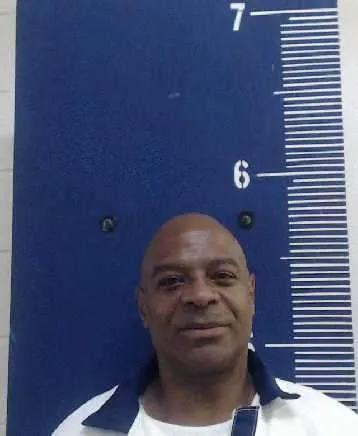Frederick Whatley was sentenced to death by the State of Georgia for the murder of Ed Allen
According to court documents Frederick Whatley would enter a store owned by Ed Allen and forced an employee to the ground while Ed Allen handed him the money. Whatley would fire at both men striking Ed Allen who would later die from his injuries
Frederick Whatley would be arrested, convicted and sentenced to death
Frederick Whatley Photos

Frederick Whatley Now
MAJOR OFFENSE: MURDER
MOST RECENT INSTITUTION: GA DIAG CLASS PRISON
MAX POSSIBLE RELEASE DATE: DEATH
Frederick Whatley Case
The evidence showed that Frederick Whatley entered Roy’s Bait Shop in Griffin at about 8:45 p.m. on January 26, 1995. Whatley brandished a .32 caliber silver revolver and forced employee Tommy Bunn to lie face-down on the floor behind the counter. Whatley pressed the gun against Bunn’s head and instructed the owner of the store, Ed Allen, to hand over the money in the cash register. Allen put money in a paper sack and placed the sack on the counter. Whatley moved to the front of the counter, retrieved the paper sack, and fired two shots. One shot struck Allen in the chest and pierced his left lung. Expert testimony established that this shot was fired from a distance of 18 inches. The second shot was fired at Bunn’s head (Bunn was still lying prone behind the counter), but the bullet deflected off the counter top and missed. Whatley then exited the store.
Outside the store, Whatley encountered Ray Coursey, who was getting out of his car near the store’s doorway. Whatley held his gun to Coursey’s head, forced him back into the driver’s seat of the car, and told him, “take me ․ where I want to go.” Whatley got in the back seat. Although mortally wounded, Allen obtained a hidden .44 caliber handgun, rushed to the front of the store, and fired several shots at Whatley, who returned fire. After the exchange of gunfire, Allen collapsed and died from internal bleeding caused by the previously-inflicted gunshot wound. Whatley exited Coursey’s car, dropped the paper sack after it tore open, and fled on foot. Coursey observed that Whatley was limping.
Coursey and Bunn told the officers who arrived on the scene that the assailant had used a silver revolver. One of the officers had taken a report the previous day from Franklin White, who said that his silver revolver was missing and he suspected that his cousin, Whatley, had taken it. The officers went to the house where Whatley was staying with a relative, and found him during a consent search. Whatley had a bullet wound in his leg that was still bleeding. Franklin White’s .32 caliber silver revolver, determined by a firearms expert to be the murder weapon, was found under Whatley’s mattress. The police also found a bloody pair of thermal underwear with a bullet hole in the leg, a bloody towel, and bloody boxer shorts in a trash can behind the house. Fibers on a .44 caliber bullet removed from Coursey’s car were consistent with fibers from the thermal underwear, and DNA taken from blood on the fibers matched Whatley. A palm print on the paper sack dropped next to Coursey’s car also matched Whatley. In the penalty phase, the state introduced evidence that Whatley was an escapee from a Washington D.C. halfway house, where he had been serving time for robbery.
The evidence was sufficient to enable a rational trier of fact to find proof beyond a reasonable doubt of Whatley’s guilt of malice murder, aggravated assault (two counts), armed robbery, motor vehicle hijacking, and possession of a firearm during the commission of a crime. Jackson v. Virginia, 443 U.S. 307, 99 S.Ct. 2781, 61 L.Ed.2d 560 (1979). The evidence was also sufficient to authorize the jury to find the statutory aggravating circumstances beyond a reasonable doubt. Id.; OCGA § 17-10-35(c)(2).
